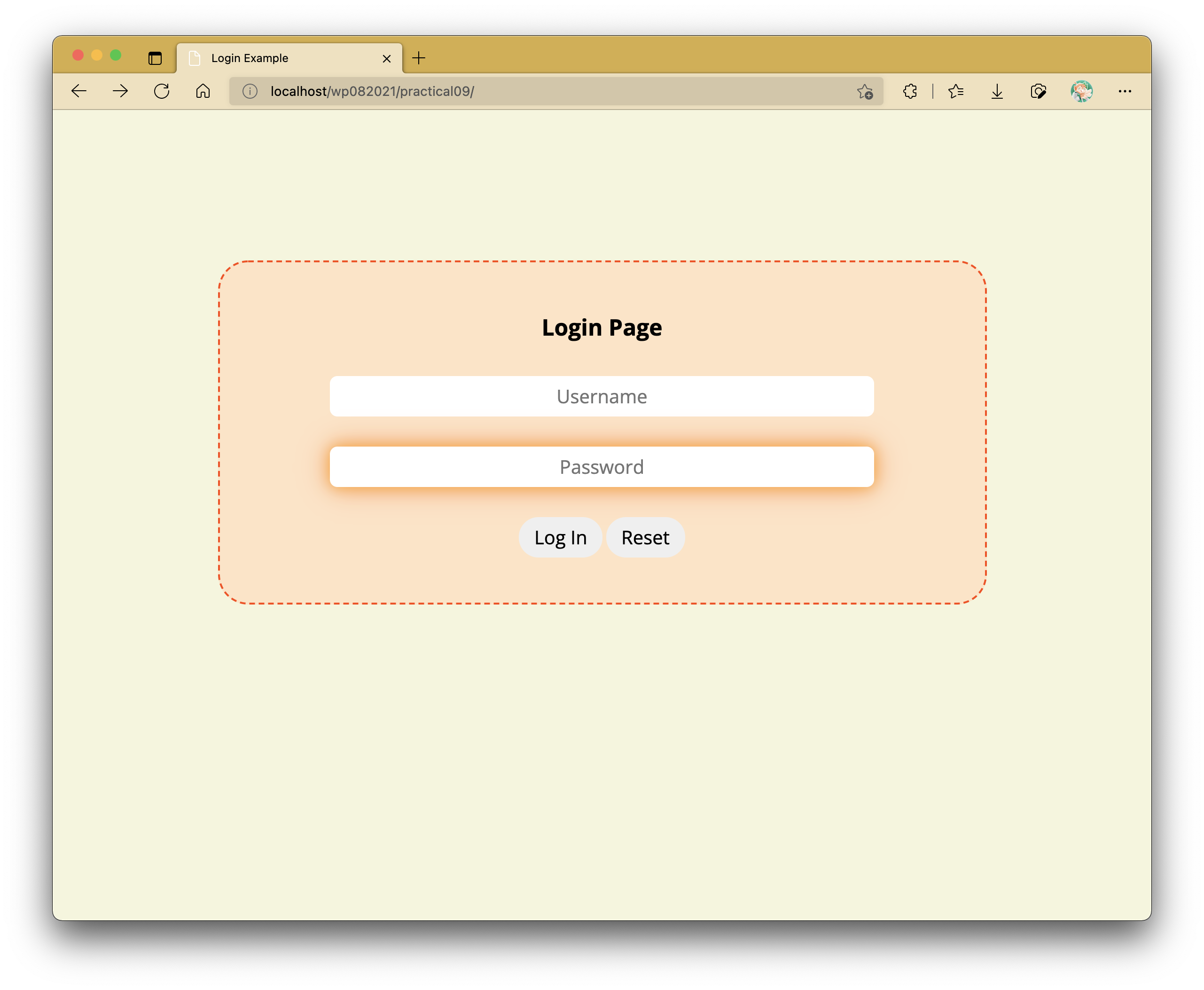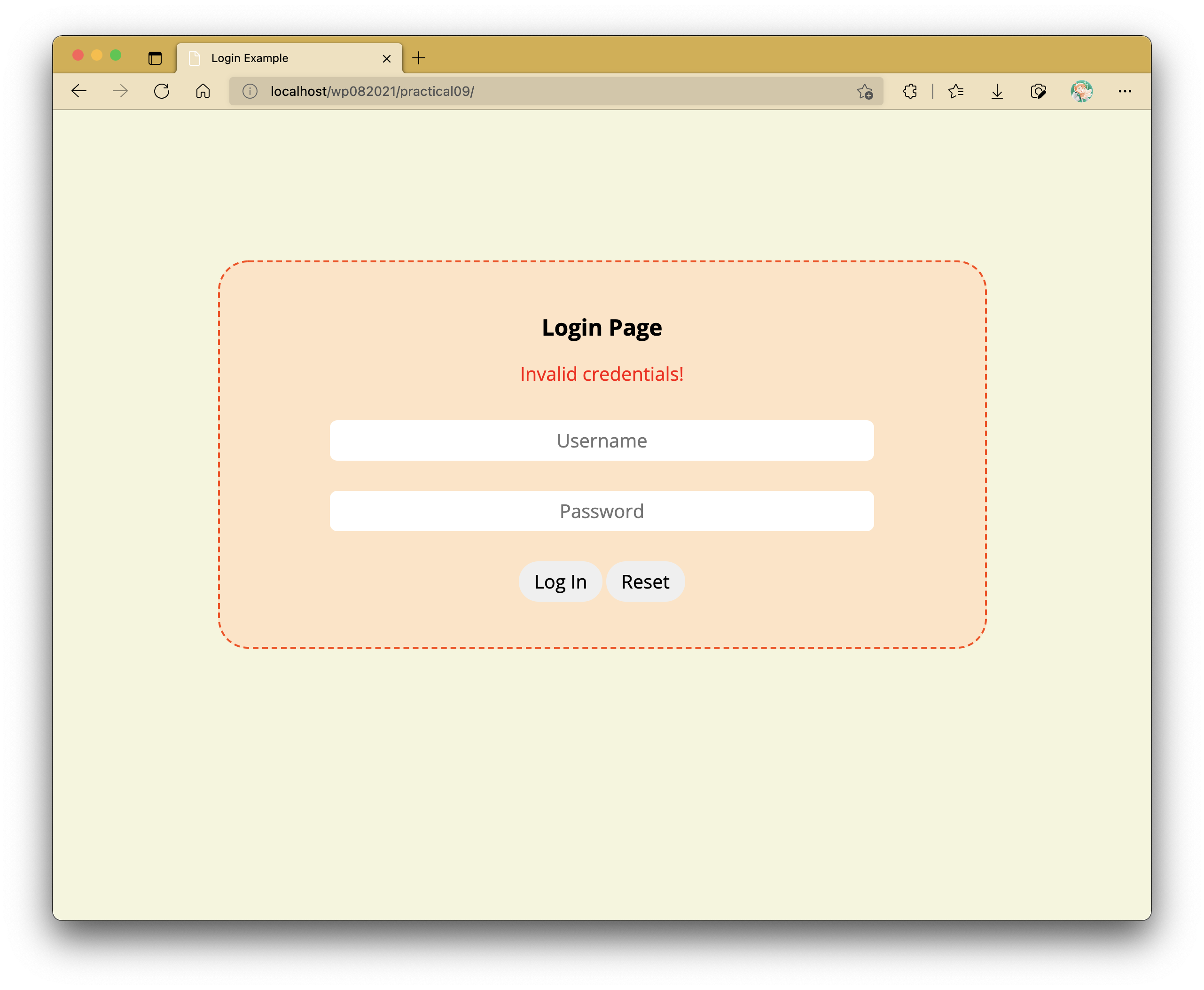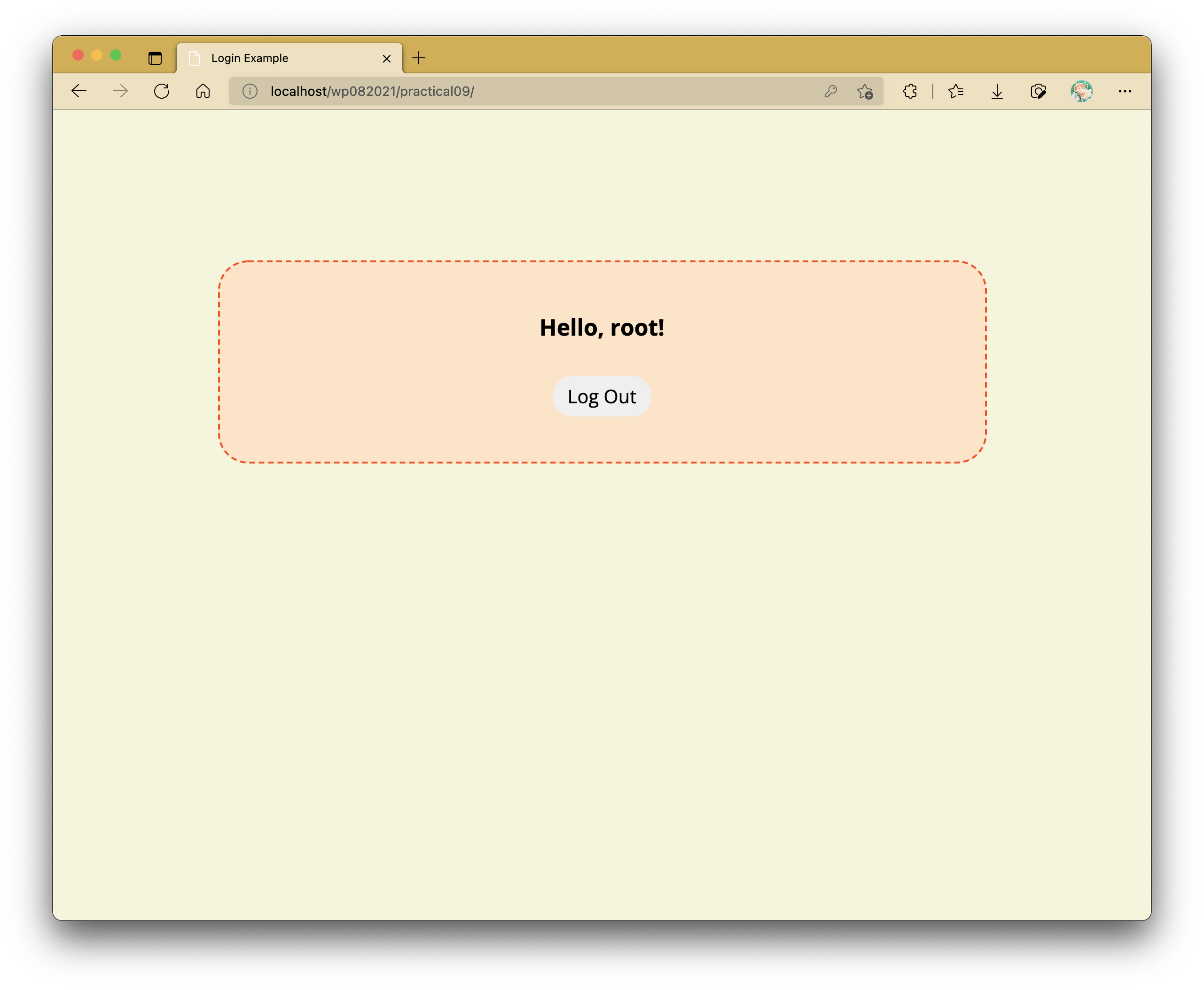Practical 09: PHP Forms and Sessions
In this practical activity, we will be creating a dummy login system that utilizes sessions. This will not utilize database connectivity just yet, but you should be able to piece them together once the lessons on those start next week.
Preparation
CSS and JS files are to be kept in their own separate subfolders.
if (document.querySelector("#logout")) {
document.querySelector("#logout").addEventListener("click", () => {
const response = confirm("Confirm logout?");
if (response) window.location.href = "logout.php";
});
}

Task 1: Checking Credentials
Our credentials are kept in a separate file named credentials.php.
We can append it to index.php by introducing the following on top:
require_once is a command that appends contents of a HTML or PHP file to wherever it is called.
In this case, credentials.php is appended at the beginning of the webpage.
There are other variants of this command:
include_onceis the same asrequire_once, but it does not halt the other webpage items from being loaded if the file doesn't exist.includeandrequireare different frominclude_onceandrequire_oncerespectively in the sense of how many times they are allowed to be appended to the page.
Now that we have our credentials appended at the top, we can now proceed to carry out form validation.
var_dump is useful if you would like to test if your credential checking is working as intended or not based on your $_POST superglobal variables.
Uncomment the var_dump line if you would like to carry out this checking, but its output should not be visible in the end result.
We are adding the sessions_start() line on top to introduce session variables if the credentials match.
This will be worked on more in the next task, but what's important now is that we create a new session variable called $_SESSION["username"] which will contain the username value entered into the form.
As for when the credentials do not match, we have a flag variable named $invalid_login which indicates if the credentials match or not.
We will utilize this to display a message in our p#error element in the form to alert users if the credentials do not match.
The if statement syntax used here is different from that of most languages, but it works especially if you plan on printing large and/or complex lines of HTML. Your page should now display a paragraph containing the alert message like as follows:

Now, let's replace the contents inside section#container to display something else if the credentials are correct (and consequently giving the illusion that you're logged in).
We will carry this out through utilizing an if-else statement.
Depending on whether $_SESSION["username"] has been defined or not, either the form or the following gets displayed:

Here, when the user is "logged in", we now have a greeting on display with the entered username. At the bottom of that greeting line, we also have a log out button.
Task 2: Implementing Logout Feature
Session variables get carried across multiple webpages, so long as they have the line session_start() on top of the page - this is compulsory.
In the end, however, all good things have to come to an end - this also includes logged-in sessions.
The logout button included has an onclick attribute which redirects the browser to another page called logout.php.
logout.php will contain a simple script to log a user out.
The contents of this script are as follows:
The simple logout process works in 3 steps:
- Start the session with
session_start(). - Unset all session variables with
session_unset(). - Destroy the session using
session_destroy().
One main reason why session_destroy() does not settle everything without session_unset() is that it only destroys the session, but any session data is still kept around.
Think of it as a job not completely done properly in such case.
The fourth line (i.e., header("Location: .");) redirects the user immediately back to index.php.
This can also be achieved if you were to type in header("Location: index.php");.
Using a period punctuation here points to the current directory, and browsers will automatically search for any file named index.php or index.html by default.
With this, you will find that you will immediately be sent back to index.php without viewing anything in logout.php.. not that it contains any visual content to be displayed in the browser to begin with.
Extra Task: Timeout
Modify the web application such that it will log you out upon refreshing the page after 5 minutes of inactivity.